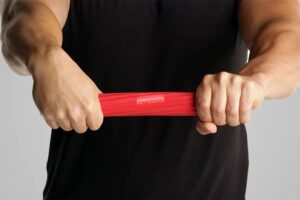
Jun 18, 2025
Pregnancy is an incredible journey — but let’s be honest, it can also come with physical discomfort, aches, and tension. That’s where pregnancy massage comes in: a safe, gentle, and effective way to support your changing body.
At Physica Health in Bagshot, we regularly get asked questions like:
“Is pregnancy massage safe?”
“When can I have one?”
“Will it help with pelvic or back pain?”
In this blog, we’ll explain exactly what pregnancy massage is, when it’s safe, and how it can help you feel more comfortable during pregnancy.
🤰What Is a Pregnancy Massage?
Pregnancy massage is a specialised form of massage therapy tailored to support the physical and emotional changes during pregnancy. It involves safe positioning (usually side-lying), gentle techniques, and a focus on common areas of tension — such as:
- Lower back
- Hips and glutes
- Neck and shoulders
- Legs and feet
👉 See our full Pregnancy Massage service here
🛟 Is It Safe?
Yes — pregnancy massage is safe when performed by qualified professionals who understand the unique needs of pregnant clients.
At Physica Health, your massage is carried out by trained women’s health specialists who adapt their approach based on your trimester, medical history, and comfort.
✅ When is it safe?
- After 12 weeks (first trimester): Most clinics, including ours, offer pregnancy massage from the second trimester onwards.
- Any time in the second or third trimester: If you’re healthy and have no contraindications, regular massage can be beneficial right up to your due date.
Always check with your midwife or obstetrician if you have any high-risk factors.
🧠 What Are the Benefits of Pregnancy Massage?
✨ Physical Relief
- Eases back, hip and pelvic pain
- Improves circulation and helps reduce swelling
- Relieves muscle tension and postural strain
- May help with sciatica or pelvic girdle pain
😌 Emotional Support
- Reduces stress and anxiety
- Promotes relaxation and better sleep
- Helps you feel more connected to your changing body
Some clients also find it helpful for preparing the body for labour — especially when combined with our Pregnancy MOT or Women’s Health Physiotherapy services.
🕒 When Should I Book One?
Every woman’s pregnancy is different, but here are some common milestones:
| Trimester |
Massage Goals |
| 2nd Trimester (Weeks 13–27) |
Relieve aches, improve sleep, ease growing discomfort |
| 3rd Trimester (Weeks 28–40) |
Support labour prep, reduce swelling, promote relaxation |
Some clients book monthly from 16 weeks onwards; others come fortnightly or in the final weeks for preparation.
Want to talk it through? Contact us here to ask our team any questions.
📍Local and Personalised Pregnancy Massage in Bagshot
We’re proud to be known locally for our friendly, women-centred approach. Our clients visit us from:
- Bagshot
- Camberley
- Lightwater
- Sunningdale
- Ascot
- Windlesham
- Frimley
Massage sessions take place in our calm, private treatment rooms — with support tailored to your stage of pregnancy.
✅ Summary
If you’re pregnant and feeling tight, sore or in need of time for yourself, pregnancy massage can help you feel more comfortable, supported and relaxed.
And the best part? You’re in safe hands at Physica Health, with therapists trained in both massage and women’s health physiotherapy.
👉 Learn more or book your pregnancy massage here
❓Frequently Asked Questions
Can I have a pregnancy massage in the first trimester?
Most clinics wait until after 12 weeks, but massage before then isn’t automatically unsafe — we just prefer to wait until the second trimester for comfort and safety.
Is it different from a regular massage?
Yes — pregnancy massage uses different positioning, pressure, and techniques. We avoid deep abdominal work and always adapt for your safety and comfort.
What if I have pelvic girdle pain or sciatica?
Massage can be very helpful — especially when combined with physiotherapy. Let us know your symptoms when booking so we can tailor your session.

Jun 3, 2025
🏃Is Sports Massage Just for Athletes? The Truth from Physica Health, Bagshot
When people hear the term “sports massage”, they often assume it’s only for elite athletes or marathon runners. But the truth is — sports massage is for everyone, and at Physica Health in Bagshot, we treat a wide range of clients, from office workers to busy parents and weekend gym-goers.
In this blog, we’ll debunk the common myths about sports massage and explain who can really benefit (hint: probably you!).
💬 What Is Sports Massage?
Sports massage is a targeted, hands-on therapy designed to:
- Reduce muscle tension
- Improve flexibility
- Aid recovery
- Prevent injury
While it originated in the athletic world, it’s now used widely to treat work-related aches, postural issues, and everyday muscular pain.
👉 Learn more about our Sports Massage services in Bagshot
👩💻Not an Athlete? You Still Qualify
Here are common non-athlete clients we help at Physica Health:
📉 Office Workers & Remote Professionals
Sitting for long hours can cause:
- Tight shoulders and neck
- Lower back stiffness
- Repetitive strain issues
Sports massage helps release built-up tension and improve posture, especially when combined with our Physiotherapy services.
🧒 Busy Parents
Lifting children, pushing buggies, and interrupted sleep all place strain on your body. Sports massage can be an effective way to stay ahead of aches and prevent injury — particularly when integrated with Women’s Health Physiotherapy.
🏋️♀️ Weekend Warriors & Casual Gym-Goers
You don’t need to be a professional athlete to benefit from performance-focused treatment. Regular massage can:
- Improve mobility
- Speed up post-exercise recovery
- Prevent overuse injuries
🗓 How Often Should You Have Sports Massage?
It depends on your lifestyle and needs. Here are some typical schedules we recommend at Physica Health:
- Prevention & maintenance: Every 3–4 weeks
- Injury rehab or pain relief: Weekly or fortnightly
- Before/after an event: 1–2 days before and after
We’ll tailor a plan to you after your first visit.
👉 Book your first sports massage appointment here
🧠 Can It Be Combined with Physiotherapy?
Absolutely. In fact, sports massage often complements your physiotherapy rehab by relaxing tight tissues and speeding up recovery. This is especially useful if you’re seeing us for:
- Back pain
- Sciatica
- Shoulder injuries
- Running-related niggles
Our experienced therapists will advise what’s best.
📍 Local & Trusted: Physica Health, Bagshot
Located in the heart of Bagshot, Surrey, we support clients from:
- Camberley
- Lightwater
- Windlesham
- Ascot
- Frimley
- Sunningdale
We’re known for our personalised care and qualified team of physiotherapists and massage therapists.
✅ Summary: Who Should Book a Sports Massage?
If you:
- Sit at a desk all day
- Play sports occasionally
- Are recovering from injury
- Feel muscle tightness or stress
- Are a busy parent or carer
…then sports massage at Physica Health could be the perfect solution.
👉 See our full range of services
👉 Contact us to book
❓ Frequently Asked Questions
Is sports massage painful?
You may feel some discomfort during deeper techniques, especially if your muscles are tight or inflamed. However, it should never be unbearable. Our therapists at Physica Health will always adjust pressure to suit your comfort level.
How long is a sports massage session?
We have different options to suit your needs. 30, 45 or 60 minutes, depending on your preference. We’ll discuss this with you during your initial consultation and tailor the treatment accordingly.
Can I have a sports massage if I don’t play sports?
Absolutely. Many of our clients in Bagshot and surrounding areas book sports massage for issues like postural tension, back pain, or work-related stress. It’s not just for athletes!
Should I choose sports massage or physiotherapy?
That depends on your symptoms. Sports massage is ideal for muscle tension and recovery, while physiotherapy may be better for injuries, rehab, or mobility concerns. We often recommend a combination. Learn more about our physiotherapy services here.
What areas do you serve?
Our clinic in Bagshot is easily accessible from Camberley, Lightwater, Windlesham, Ascot and other areas in Surrey Heath.
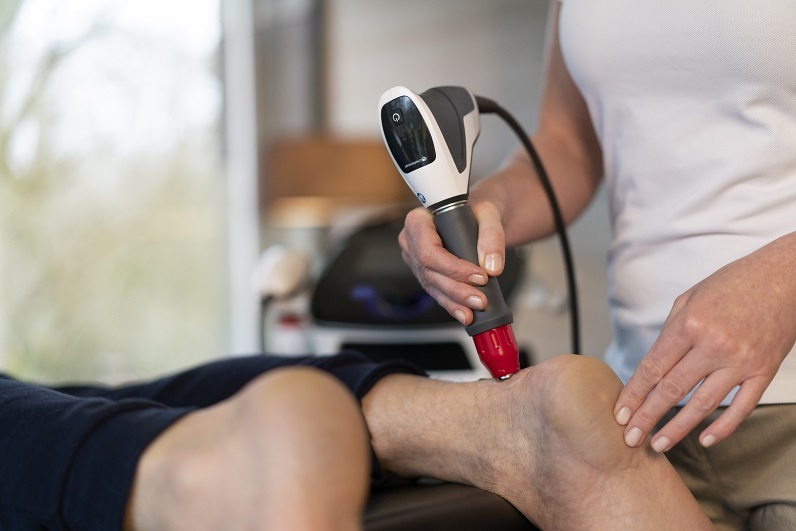
Jan 26, 2025
Tendon injuries can be incredibly painful and frustrating, often making everyday movements difficult. Whether you’re struggling with a nagging elbow issue, persistent foot pain, or discomfort in your shoulder, finding an effective treatment is key to getting back to normal activity. At Physica Health Physiotherapy, we specialise in shockwave therapy—a proven treatment that helps stimulate healing and reduce pain for various tendon conditions. If you’re in Bagshot, Camberley, Lightwater, Ascot, or the surrounding areas in Surrey, our expert team is here to help.
In this article, we’ll explore the seven most common tendon injuries that shockwave therapy can treat, helping you understand how this innovative approach could be the solution you need.
1. Tennis Elbow (Lateral Epicondylitis)
Tennis elbow is a common condition caused by repetitive strain on the tendons in the outer elbow, often from activities like racket sports, typing, or manual work. It leads to pain, stiffness, and weakness in the arm. Shockwave therapy helps by breaking down scar tissue, increasing blood flow, and stimulating the body’s natural healing process.
2. Golfer’s Elbow (Medial Epicondylitis)
Similar to tennis elbow, but affecting the inner elbow, golfer’s elbow results from overuse of the forearm muscles. This condition causes pain and tenderness on the inside of the elbow, making gripping objects painful. Shockwave therapy helps to reduce inflammation and promote the repair of damaged tendon fibres.
3. Achilles Tendinopathy
The Achilles tendon is one of the strongest tendons in the body but is also prone to overuse injuries, particularly in runners and active individuals. Achilles tendinopathy causes pain, stiffness, and swelling at the back of the ankle. Shockwave therapy helps by stimulating collagen production and reducing chronic inflammation, accelerating recovery.
4. Plantar Fasciitis
Plantar fasciitis is one of the most common causes of heel pain, often caused by excessive strain on the plantar fascia—a thick band of tissue that runs along the bottom of the foot. This condition makes walking painful, especially first thing in the morning. Shockwave therapy is highly effective in breaking down calcifications and improving blood flow to the area, reducing pain and inflammation.
5. Patellar Tendinopathy (Jumper’s Knee)
Patellar tendinopathy, commonly known as jumper’s knee, affects the tendon that connects the kneecap to the shinbone. It is often seen in athletes who do a lot of jumping and running. This condition causes pain just below the kneecap and can limit mobility. Shockwave therapy helps by reducing chronic pain and promoting tendon regeneration.
6. Gluteal Tendinopathy
Gluteal tendinopathy is a common cause of hip pain, particularly in women over 40 and runners. It occurs due to overloading or degeneration of the gluteal tendons, leading to pain on the outside of the hip, especially when lying on the affected side. Shockwave therapy works by stimulating the repair of the tendons and reducing pain levels.
7. Rotator Cuff Tendinopathy
The rotator cuff consists of several tendons that help stabilise the shoulder joint. Overuse or wear and tear can lead to rotator cuff tendinopathy, causing shoulder pain, weakness, and restricted movement. Shockwave therapy can help by reducing inflammation, increasing circulation, and encouraging tissue repair in the shoulder.
- Non-invasive treatment with no need for injections or surgery.
- Clinically proven results for chronic tendon injuries.
- Faster recovery times, helping you return to daily activities or sports sooner.
- Local experts based in Bagshot, serving Camberley, Lightwater, Ascot, and surrounding areas in Surrey.
Book Your Shockwave Therapy Session Today
If you’re suffering from any of the tendon injuries listed above and want to explore shockwave therapy as a treatment option, our team at Physica Health Physiotherapy is here to help. We offer expert physiotherapy services tailored to your specific condition to get you back to pain-free movement.
📍 Visit us in Bagshot or book an appointment online today. We proudly serve patients from Camberley, Lightwater, Ascot, and surrounding Surrey areas. Don’t let tendon pain hold you back—discover the benefits of shockwave therapy with Physica Health Physiotherapy today!
Call us on 01276916346 or Book online HERE
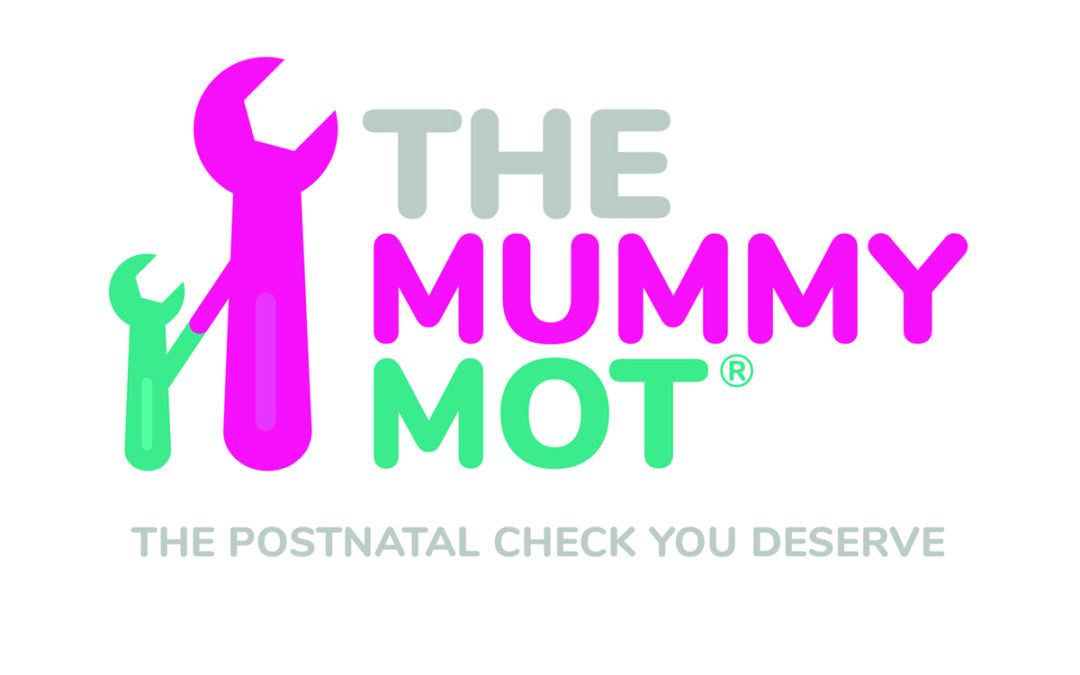
Nov 8, 2024
The Complete Guide to a Mummy MOT in Surrey: What New Mums Need to Know in Bagshot, Camberley, and Sunningdale
Welcoming a new baby is a life-changing event that brings immense joy but also significant physical challenges. For many new mothers, the postnatal period can be fraught with unexpected bodily changes and discomforts. If you’re a new mum in Bagshot, Surrey, or nearby areas like Camberley, Ascot, and Sunningdale, you may have heard about the Mummy MOT®. At Physica Health Physiotherapy, based in Bagshot, we offer this unique service as part of our pregnancy physiotherapy in Surrey to provide comprehensive postnatal health checks and personalized recovery plans to support your journey back to strength and well-being.
In this guide, we’ll cover everything you need to know about the Mummy MOT: who it’s for, what it involves, and why it’s essential for long-term health.
Who Needs a Mummy MOT®?
At Physica Health Physiotherapy, we believe that every postnatal woman can benefit from a Mummy MOT. Childbirth, whether through vaginal delivery or a cesarean section, often leaves lasting effects on the body, such as postural changes, weakened core muscles, and instability around the pelvis. These changes can lead to a range of issues:
- Pelvic pain
- Back pain
- Pelvic organ prolapse
- Bladder and bowel weakness or incontinence
- Abdominal separation (tummy gap) or diastasis recti
For women who have undergone a cesarean section, the impact can be even more complex, with potential complications from scar tissue. Identifying and addressing these issues early through a Mummy MOT, a crucial aspect of our pregnancy physiotherapy in Surrey, can prevent future problems and promote effective recovery. Many new mums also opt for a Mummy MOT before returning to exercise, ensuring their bodies are ready for physical activity.
What Does the Mummy MOT® Involve?
A Mummy MOT at Physica Health Physiotherapy in Bagshot is much more than a standard check-up. It is a detailed, one-hour postnatal assessment performed by our Specialist Women’s Health Chartered Physiotherapist, Vanesha Patel, who is a certified Mummy MOT Practitioner. Here’s what you can expect:
- Comprehensive Pelvic Floor Check
Your pelvic floor muscles are critical to your overall postnatal recovery. We’ll assess strength and function to manage or prevent conditions like incontinence and pelvic organ prolapse.
- Assessment of Tummy Gap (Diastasis Recti)
Many new mums experience separation of the abdominal muscles, which can cause core instability and back pain. We’ll measure any gap and prescribe targeted exercises to promote healing.
- Postural and Physical Assessment
Pregnancy can alter your posture, impacting your whole body. Our physiotherapist will conduct a thorough evaluation of your posture, alignment, and any physical complications from pregnancy or birth.
- Personalized Postnatal Recovery Program
Your recovery plan will be tailored to your specific needs, lifestyle, and fitness goals. It will include safe and effective exercises to strengthen your core, improve stability, and correct posture, all designed for postnatal recovery.
- Detailed Advice and Findings Report
You’ll leave with a comprehensive report detailing the findings of your assessment and practical advice to support your ongoing recovery.
Why Choose Physica Health Physiotherapy for Your Mummy MOT in Bagshot, Surrey?
Located in Bagshot, Physica Health Physiotherapy is ideally situated for mums in Surrey and surrounding areas, including Camberley, Ascot, and Sunningdale. Our clinic provides convenient access to expert care designed for postnatal recovery. We specialize in pregnancy physiotherapy in Surrey, and Vanesha Patel, our Specialist Women’s Health Physiotherapist, is dedicated to helping new mums navigate the postnatal period with confidence and support.
It’s Never Too Late to Get a Mummy MOT®
While the best time for a Mummy MOT is 6-8 weeks postnatally, it’s never too late to benefit from an assessment. We frequently see women who gave birth years ago but still experience pelvic floor issues, diastasis recti, or persistent back pain. A Mummy MOT can help address these ongoing concerns and improve your quality of life.
Whether you’re dealing with discomfort or want peace of mind before getting back to exercise, our expert assessment can set you on the path to a stronger, healthier body.
Practical Information for Your Mummy MOT Appointment
- Timing: Appointments are available from 6 weeks postnatally (after your GP check).
- Duration: Each session lasts for 60 minutes.
- Pre-Appointment: A health questionnaire must be completed 24 hours in advance to help our physiotherapist prepare.
- Bringing Your Baby: Babies are welcome, though you may find it easier to focus if you come alone.
- Chaperone: You’re welcome to bring a companion if that makes you feel more comfortable.
Booking and Costs
The Mummy MOT is a self-pay service, priced at £110. Some follow-up Women’s Health Physiotherapy sessions may be covered by insurance, but please check with your provider and us beforehand.
Take the First Step Toward Recovery
Investing in a Mummy MOT at Physica Health Physiotherapy is investing in your long-term well-being. As part of our specialized pregnancy physiotherapy services in Surrey, we offer personalized care and expert guidance to help you manage postnatal challenges and return to an active, pain-free lifestyle.
Ready to book your Mummy MOT? Visit Physica Health Physiotherapy in Bagshot, Surrey, and let us support your postnatal journey back to health.
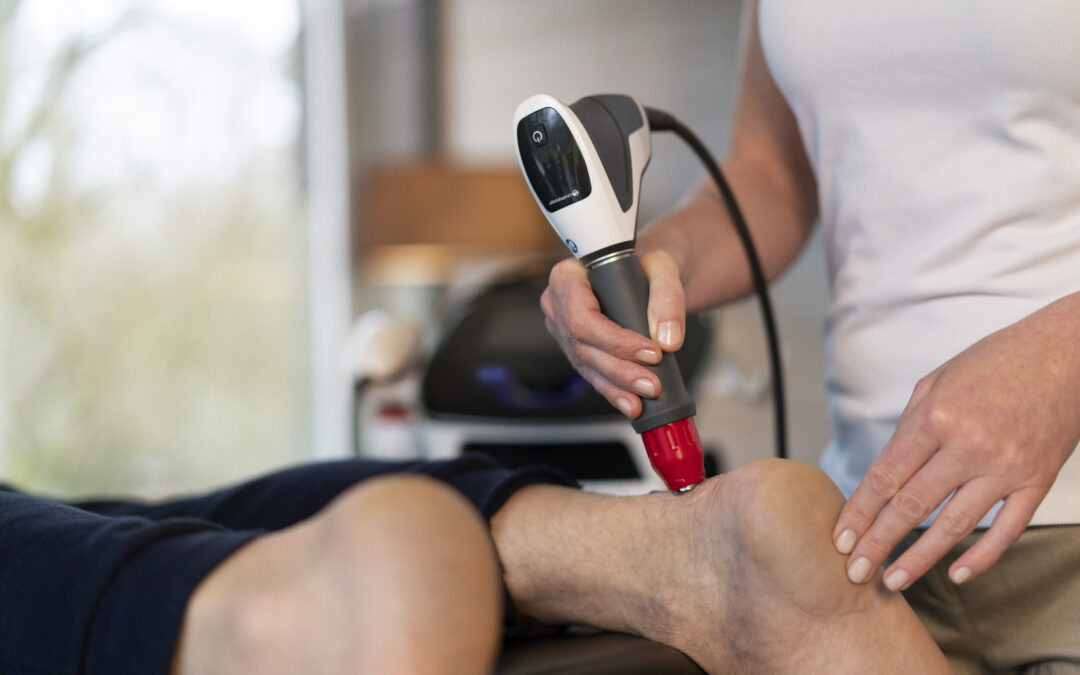
Oct 28, 2024
Are you struggling with chronic musculoskeletal (MSK) issues such as plantar fasciitis, Achilles tendinopathy, or patella tendinopathy? If you live near Bagshot, Camberley, Ascot, or Lightwater, Physica Health offers a powerful, non-invasive treatment option called Shockwave Therapy, also known as Extracorporeal Shockwave Therapy (ESWT), that may help. This advanced therapy can be a game-changer for managing MSK conditions that impact your quality of life.
What is Extracorporeal Shockwave Therapy (ESWT)?
Extracorporeal Shockwave Therapy (ESWT) is a non-surgical treatment that uses sound waves to stimulate healing in injured tissues. During the treatment, a handheld device delivers high-energy sound waves to the affected area. These waves penetrate deep into the tissue, promoting blood flow, reducing inflammation, and enhancing cell regeneration. By encouraging the body’s natural healing processes, ESWT can provide effective relief for those with chronic or painful MSK conditions.
Physica Health in Bagshot is proud to offer this cutting-edge therapy as part of our suite of physiotherapy services, which are also available for clients in nearby Camberley, Ascot, and Lightwater. With our expertise in MSK conditions and ESWT, we help patients find relief and improve their mobility.
How Does ESWT Work?
The treatment process of ESWT is straightforward and typically takes around 15-20 minutes per session. Here’s a closer look at how it works:
- Preparation: The targeted area is identified, and ultrasound gel may be applied to help conduct the shockwaves.
- Application: A handheld device is placed on the area, sending controlled acoustic waves into the tissue.
- Stimulation: The sound waves stimulate cellular activity, increase blood flow, and accelerate healing. The treatment is generally well-tolerated, though you may feel mild discomfort in the treated area.
- Recovery: ESWT requires little to no downtime, allowing you to resume your daily activities shortly after each session.
ESWT is often used in combination with other physiotherapy treatments at Physica Health to provide a comprehensive approach to recovery, ensuring that each patient receives the most effective care for their condition.
Common Conditions Treated with ESWT
Shockwave therapy is highly effective for treating several common MSK issues. Here are a few of the conditions we treat at Physica Health with ESWT and how they benefit from this therapy:
1. Plantar Fasciitis
Plantar fasciitis is a common condition causing pain in the heel and the bottom of the foot, often due to inflammation of the plantar fascia ligament. This condition is prevalent in those who are on their feet often or have high-impact lifestyles. ESWT helps by promoting blood flow to the affected area, reducing inflammation, and accelerating tissue repair. Patients often report significant relief after just a few sessions, making it a preferred treatment for plantar fasciitis at our Bagshot clinic.
2. Achilles Tendinopathy
Achilles tendinopathy, a condition characterized by pain and stiffness in the Achilles tendon, can be challenging to treat due to limited blood flow in the tendon. ESWT stimulates blood circulation, improving oxygen and nutrient supply to the tendon. The shockwaves also promote collagen production, essential for tendon repair and strengthening. With Physica Health’s personalized ESWT treatments, many patients from nearby areas such as Lightwater and Camberley experience long-lasting relief from Achilles tendinopathy.
3. Patellar Tendinopathy
Patellar tendinopathy, commonly known as “jumper’s knee,” affects the tendon connecting the kneecap to the shinbone and is often seen in athletes or individuals with active lifestyles. ESWT is effective in treating patellar tendinopathy by addressing the damaged tissue and promoting the healing process. By stimulating cell regeneration and reducing inflammation, shockwave therapy can help restore the knee’s function, making it a highly effective treatment for individuals struggling with knee pain.
Why Choose Physica Health for Shockwave Therapy?
At Physica Health, located in Bagshot and easily accessible from Camberley, Ascot, and Lightwater, we understand that every patient’s needs are unique. Our physiotherapists are experienced in treating a variety of MSK issues, and we take a tailored approach to ESWT treatment plans, adjusting the intensity and frequency based on each patient’s condition and response to the therapy.
Our clinic emphasizes a holistic approach, ensuring that you not only experience pain relief but also receive guidance on lifestyle adjustments and exercises to support long-term recovery. Shockwave therapy is just one of the advanced treatments we offer at Physica Health, and we are committed to providing high-quality care that helps our patients lead healthier, pain-free lives.
Frequently Asked Questions about ESWT
1. Is ESWT painful?
Most patients find ESWT to be a comfortable treatment with only mild discomfort during the session. However, this varies depending on individual sensitivity and the area being treated.
2. How many sessions are needed?
A typical treatment plan includes 3-6 sessions, spaced about a week apart. However, the number of sessions may vary depending on the severity of your condition.
3. Are there any side effects?
ESWT is generally safe, with minimal side effects. Some patients may experience slight redness or soreness in the treated area, which usually resolves quickly.
Book Your ESWT Consultation Today
If you’re dealing with plantar fasciitis, Achilles tendinopathy, patella tendinopathy, or other chronic MSK issues, Extracorporeal Shockwave Therapy at Physica Health could provide the relief you need. Serving patients in Bagshot, Camberley, Ascot, Lightwater, and surrounding areas, our clinic is dedicated to helping you live pain-free.
Contact Physica Health today to schedule your consultation and learn how shockwave therapy can aid in your recovery journey. We’re here to provide effective, personalised treatment that makes a difference.
Call 01276916346 or email info@physicahealth.co.uk
You can also Book online HERE.

Apr 30, 2024
Lateral epicondylosis, also known as tennis elbow, is a common elbow injury we often see as Physiotherapists. It can be frustrating because it usually happens in the arm you use the most and doesn’t respond well to traditional treatments that are still commonly used, despite recent evidence showing they’re not effective.
There are different ways to deal with tennis elbow. Some people rest their arms, while others exercise them. In this article, I’ll talk about why physiotherapy can help with tennis elbow and cover:
– What exactly tennis elbow is
– Why it causes pain
– How we diagnose it
– Why cortisone injections aren’t a good idea
– The right way to ease tennis elbow pain
– What a good long-term treatment plan involves
WHAT IS TENNIS ELBOW?
Tennis elbow used to be called lateral epicondylitis, but we now call it lateral epicondylosis because of new evidence. It might seem like a small change, but it affects how we treat this wrist extensor overuse injury. Lateral epicondylitis means inflammation, while lateral epicondylosis means degeneration.
This means we should focus on treating the degeneration of the common wrist extensor tendon at the elbow, rather than inflammation. These treatments are very different.
CAUSES
Tennis elbow mostly happens because you use your forearm muscles too much on one side, especially during activities like tennis or repetitive movements. Like most tendon injuries, too much strain on the tendon leads to degeneration happening faster than it can heal, causing tennis elbow.
As we mentioned before, recent evidence shows inflammation isn’t the main issue here; it’s the degeneration of the forearm wrist extensor tendon. So the most painful movements usually happen when you’re holding something with your wrist extended, like turning a doorknob or using keys. This also weakens your grip strength, a common symptom of tennis elbow.
Tennis elbow affects a wide range of people, from tennis players to office workers to manual laborers. In fact, many people experience some form of tennis elbow pain at some point.
STEROID INJECTIONS FOR TENNIS ELBOW
Cortisone injections have been commonly used to treat chronic tennis elbow pain. But now we know they’re not very effective for this injury. Injecting cortisone into the painful degenerated tendon can actually weaken tendons and make the degeneration worse, causing more elbow pain.
TENNIS ELBOW PAIN RELIEF TECHNIQUES
When dealing with tennis elbow, it’s important to avoid making the problem worse. But often people are just told to stop doing things they need or enjoy.
Instead, it’s better to limit or change the activity that’s causing the problem. This can mean:
– Doing the activity less often
– Using smaller objects during the activity, like using a smaller grip or racket in tennis
– Massaging the forearm muscles can help with pain, but it’s only a short-term fix and doesn’t solve the tendon degeneration
– Applying heat or ice can also help with pain, but it’s only a temporary solution
TENNIS ELBOW PAIN RELIEF EXERCISES
Strengthening exercises are the best way to reduce elbow pain and reverse tendon degeneration in the long term. Eccentric exercises are particularly helpful, where the muscle lengthens under tension instead of contracting.
- Flexbar Eccentric Exercise – The flexbar has been designed specifically for tennis elbow pain. The unique nature of the design allows you to load the wrist extensors through their natural movement, using your opposite hand as a counter lever, before slowly eccentrically loading the painful arm. When performing this exercise you would ideally have a very slow 6 second eccentric contraction. It is expected that there will be a tolerable level of pain and discomfort whilst performing this exercise, which is not harmful to the wrist extensor tendon.
- Eccentric Wrist Curl Exercise – Holding a small dumbbell with your palm facing the ground, begin in the fully extended wrist position before allowing a 6 second eccentric contraction as you lower the weight. It is also expected that there will be a tolerable level of pain and discomfort whilst performing this exercise, which is not harmful to the wrist extensor tendon.
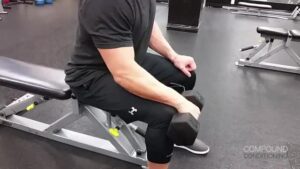
Other Effective Treatments for Tennis Elbow
Extracorporeal (outside the body) Shockwave (high energy sound waves) therapy is a non-invasive treatment designed to treat some causes of chronic musculoskeletal pain without the need for injections, medication or surgery. It has been shown in studies to be effective, particularly in issues related to tendons.
TIPS & ADVICE
It’s important to find a Physiotherapist who knows how to treat tennis elbow and can create a plan tailored to you.
Don’t stop the activity completely, as tennis elbow is a tendon injury that needs some loading to heal.
And don’t rush back into normal activities too quickly. It’s common for people to feel better and then overdo it, ending up back in pain.
FREQUENTLY ASKED QUESTIONS
How is tennis elbow diagnosed?
Tennis elbow is typically diagnosed by a Physiotherapist through a thorough medical history and musculoskeletal examination of the painful elbow and wrist extensors. The diagnosis is not required to be confirmed by an orthopaedic scan.
What does tennis elbow feel like?
Tennis elbow can begin by feeling like a dull ache on the outside of the elbow and, if untreated, it can progress to a sharp pain on the outside of the elbow that can radiate down the arm towards the thumb as the lateral epicondylitis progresses.
Why isn’t my tennis elbow pain getting better?
The medical terminology for tennis elbow is lateral epicondylosis, which means degeneration of the tendon on the outside of the arm at the elbow. Tendons have a poor blood supply and degenerated tendons will not heal without a progressively loaded treatment protocol designed by a Physiotherapist.
What are the early warning signs of an injury?
The early warning signs of tennis elbow are pain on the outside of the elbow at the start of an activity that seems to dissipate as you warm up. Due to this insidious onset, many people ignore the early warning signs and continue to aggravate the degeneration of the tendon, resulting in a chronic overuse injury.
When should you use a tennis elbow brace?
A tennis elbow brace can be used to help limit the continued overuse injury of the wrist extensors causing the elbow pain. It is important to note that these braces will only decrease pain in the short term by limiting movement, rather than aiding in the healing of the degenerated tendon.







